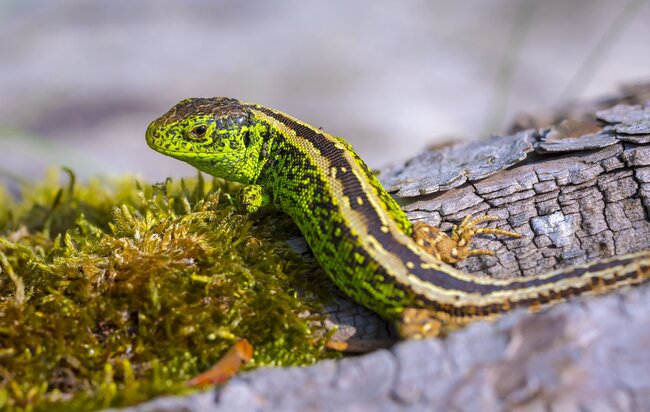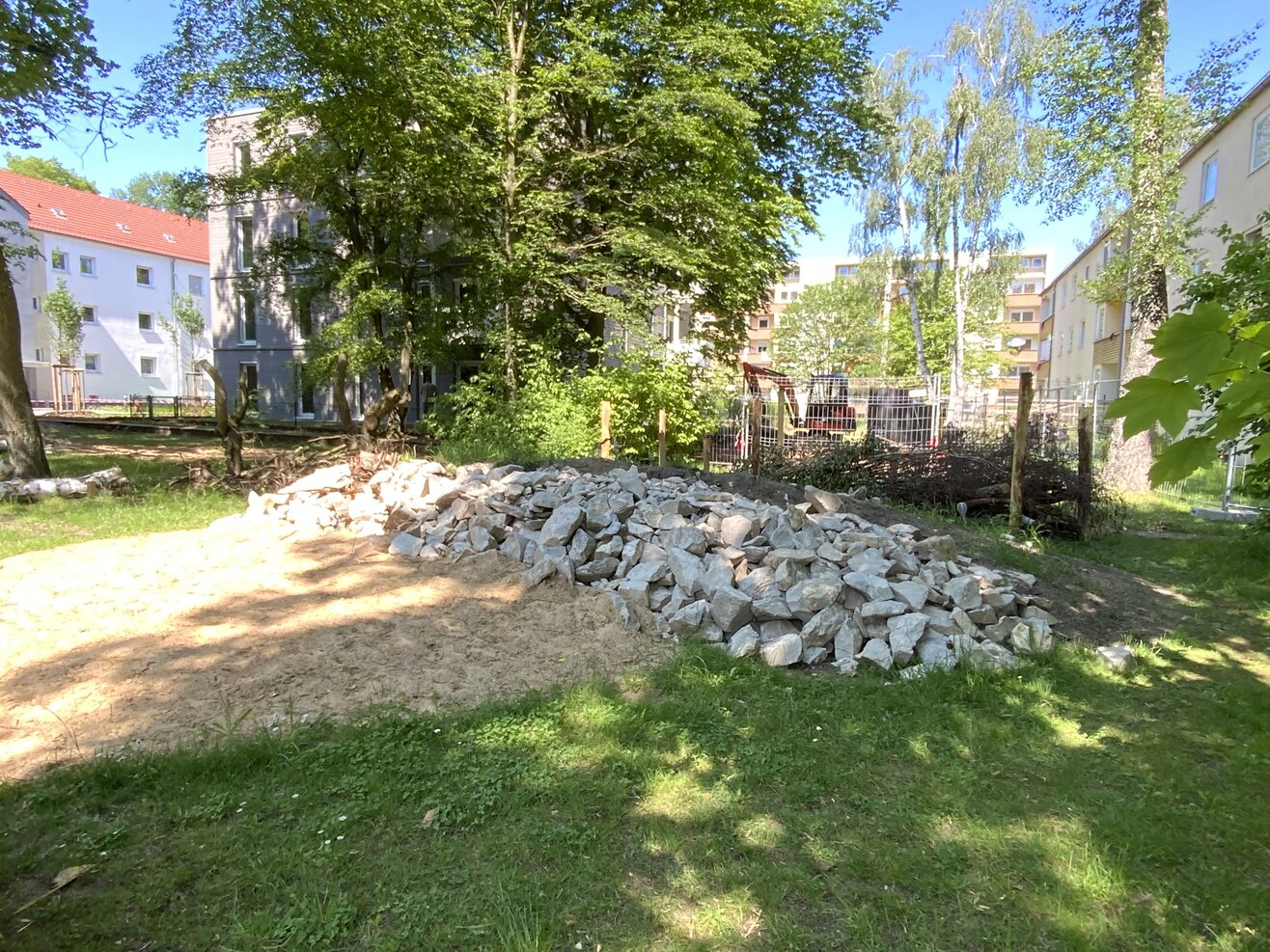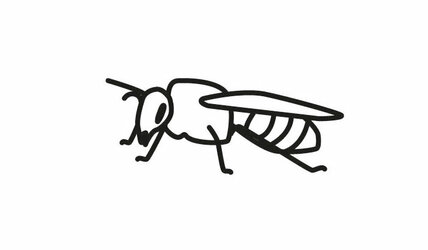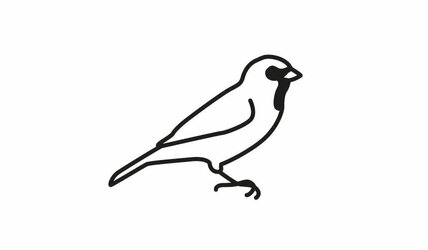Fact sheet
- Lacerta agilis
- Length: 11 cm
- Males: green, black-brown
- Females: gray-brown
- Predators: birds, mice, smooth snakes, house cats
- Food: insects
- Hibernation

Lizard habitat
Lizards live here
With its slender, green or brown colored body, the sand lizard is perfectly camouflaged in its environment. It prefers sunny, dry and open areas, often consisting of sandy soil and scattered stones. The sandy soil offers the sand lizard ideal opportunities to hide, nest and flee from predators. The stones serve as sunbathing areas where the warm-blooded animals can warm up. Sufficient sunlight is essential for the lizard to regulate its body temperature.
There are various plants and insects in the lizard habitat that the lizard feeds on. The combination of sand and stones creates a unique microclimate that favors the survival and reproduction of this lizard species. An undamaged habitat is crucial for their well-being.
In order to create such a habitat for the sand lizard, we are unsealing areas in Langwasser and reusing the materials to build such habitats.
Deadwood also plays an important role as a habitat for sand lizards. Between lying tree trunks or under hedges of dead wood, the lizard finds a safe hiding place when threatened. The tree trunks also offer them places to sunbathe.
Also interesting: If you look closely and are lucky, you can observe a fascinating protective mechanism in the sand lizard: In case of danger, it can shed its tail, which later grows back.




